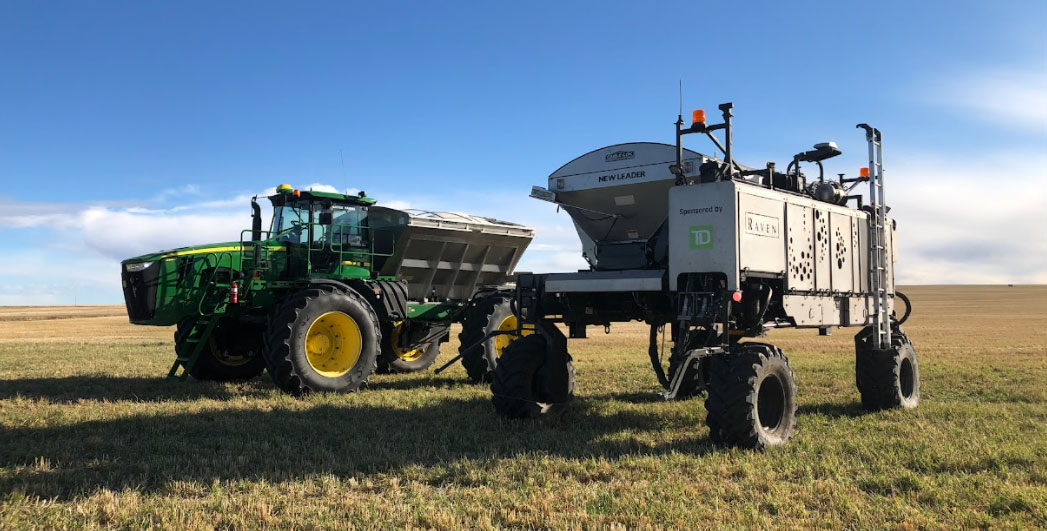Finishing its second year of using autonomous agriculture equipment, the Olds College Smart Farm was able to get A LOT more comfortable with OMNiPOWER by collecting data on a total of 60 missions seeding, spraying, spreading and training across 5,408 acres in partnership with Carlson Ag, Gatez Farms Ltd. and Pattison Farms.
Olds College Smart Farm made two substantial improvements to OMNiPOWER in the 2021 growing season: a dedicated and expanded team, and increased data capture with new electronic data collection technology. In the second year of operations, based on what Olds College learned about autonomous ag equipment in the first year, the team was able to run the equipment more efficiently, get more acreage coverage, and improve field efficiencies and uninterrupted hands-off operation. And the numbers clearly demonstrate this.
To increase the number of available acres for testing and operation, Olds College partnered with local producers Carlson Ag and Gatez Farms Ltd. to operate OMNiPOWER on a number of their fields located close to campus. As well, the College’s collaboration with Pattison Farms — located in Lemberg, Saskatchewan — allowed Olds College to gather an additional 580 acres of quality user-observed data from four separate missions on Pattison’s OMNiPOWER platform.

OMNiPOWER spreading fertilizer on Gatez Farms east of Crossfield, Alta.
Throughout the Olds College Smart Farm and on location at both Carlson Ag and Gatez Farms Ltd., Olds College OMNiPOWER platform completed a total of 56 missions (mission being the term used when OMNiPOWER is carrying out an operation in a field after it has been programmed):
- Seeding 497 acres
- Spraying 2,158 acres
- Spreading 1,895 acres (granular fertilizer)
OMNiPOWER also clocked five hours and 16 minutes as the longest hands off operation (beating season one’s record of one hour and 17 minutes).
The team is in the midst of compiling the data collected during the 2021 season about overall performance, learnings and efficiencies from the second year of using autonomous equipment on the Smart Farm, but let’s learn more about the data itself.